Women all over the country are knitting pink hats, retrieving their best walking shoes and making signs in preparation for Saturday’s march for women’s rights and social justice, but it will not be the first time a huge mobilization of women has marched at a Presidential inauguration.
A little over a 100 years ago, on March 3, 1913, the day before Wilson’s inauguration, Suffragettes marched to pressure Wilson to honor their cause, delivering a letter insisting that he make suffrage a priority of his administration.
The letter warned Wilson that the women of the nation would be watching “with an intense interest such as has never before been focused upon the administration of any of your predecessors.”
The 1913 march is remarkable on many levels: It reflects stupendous organization. The march was planned a year in advance to raise money and to draw participants from across the country in an era where mass communication was limited to letters and phone calls.
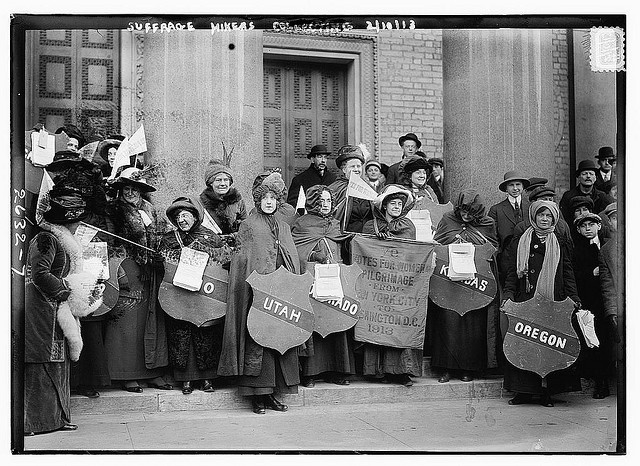
A group of “Suffragette Hikers” who marched from New York City to Washington to join the march.
To call attention to the march a small group of women walked the 247 miles from New York City to Washington. The “Suffragette Hikers,” as they were known, endured cold and rainy weather and harassment from male observers in the 17 days it took them to complete their journey.
Almost every state was represented in the march. A group of Black women, led by the activist, Ida Wells, were the last to join the march against the objection of its founder, Alice Paul.
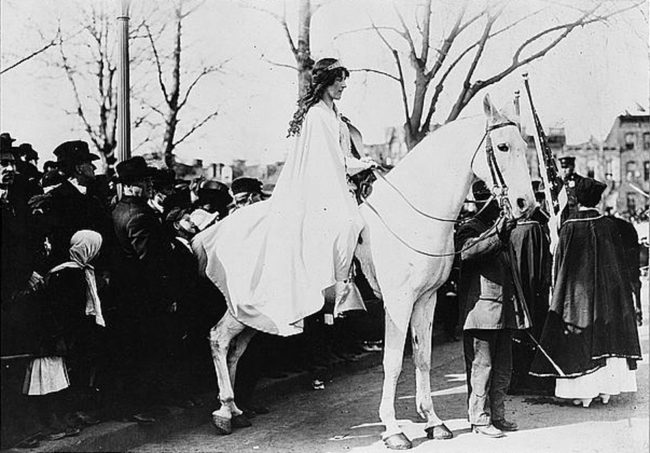
Inez Milholland, majestically leading the march
The Suffragette march was replete with pageantry—a precursor to what we now think of as ‘street theater.” Labor lawyer Inez Milholland, dressed dramatically in white astride a white horse, led the 8,000 marchers. Among the marchers were nurses in their white uniforms; women from the Seven Sister colleges in their graduation gowns and mortar boards, carrying banners announcing their schools; Native American women in native dress on horseback; and delegations from foreign countries in ethnic attire.
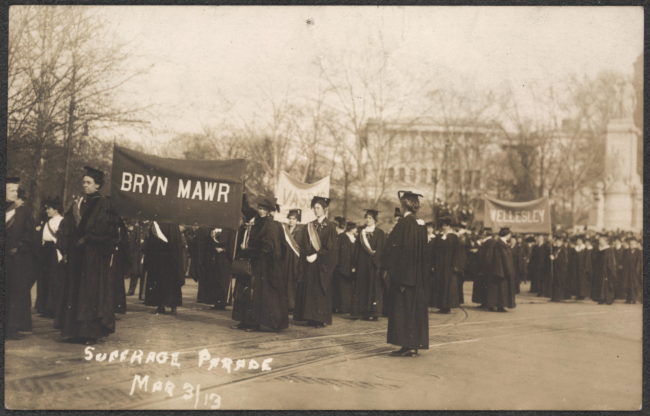
Bryn Mawr, among the seven sister colleges who marched
There were a total of nine bands, four mounted brigades, and 20 floats. The march culminated in an allegorical tableau near the Treasury Building where women dressed in flowing gowns represented Justice, Charity, Liberty, Peace and Hope. (Talk about a spectacle!)
All was going well until the march, proceeding up Pennsylvania Avenue, approached the White House. There a crowd of men in town for the inauguration grew agitated, shoving and taunting the marchers and blocking their path. Some women fell to the ground while others were assaulted; one marcher described a man grabbing her breasts. The DC policeman stood by passively, appearing sympathetic to the mob.
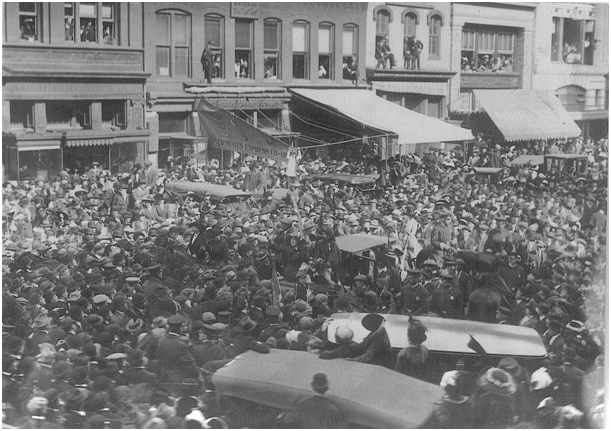
Women marchers getting mobbed
To quell the mounting tension the Massachusetts and Pennsylvania national guards stepped in. Eventually, boys from the Maryland Agricultural College created a human barrier protecting the women from the angry crowd and helping them progress forward to their destination. Over 100 women were treated for injuries at local hospitals.
The mistreatment of the marchers amplified the event — and the cause — into a major news story. On March 8, 1913, the Women’s Journal triumphantly declared, “Nation Aroused by Open Insults to Women — Cause Wins Popular Sympathy.”
A year after the march a Congressional panel investigating the abuses women suffered in the march, found the DC police chief guilty of negligence, causing him to lose his job.
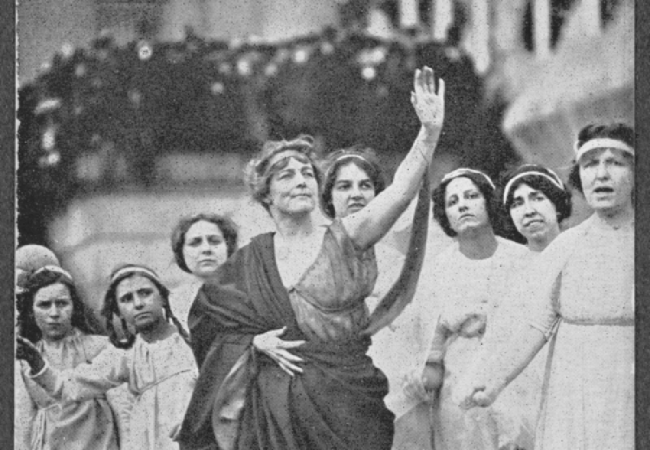
Liberty and her attendants greeting the marchers at the march’s conclusion
What we can learn from the Suffragettes 1913 march is the importance of well thought out organizing and fund-raising, and maybe most importantly of all, never to give up. Suffragettes were fearless in facing down their many obstacles, like male harassment, imprisonment and frustration in facing the long path to reform.
2017 activists have it pretty cushy by comparison. All we have to do is to board a car, bus or plane to arrive in DC. We have social media and cell phones to put out alerts for help if we’re being harassed or face arrest.
The Suffragettes faced push back time and again in the half a century it took to get the vote for women. We’ve lost ground on abortion rights, but that’s no reason to stop working for them or to let disappointment hold us back. Let your inner Suffragette shine!
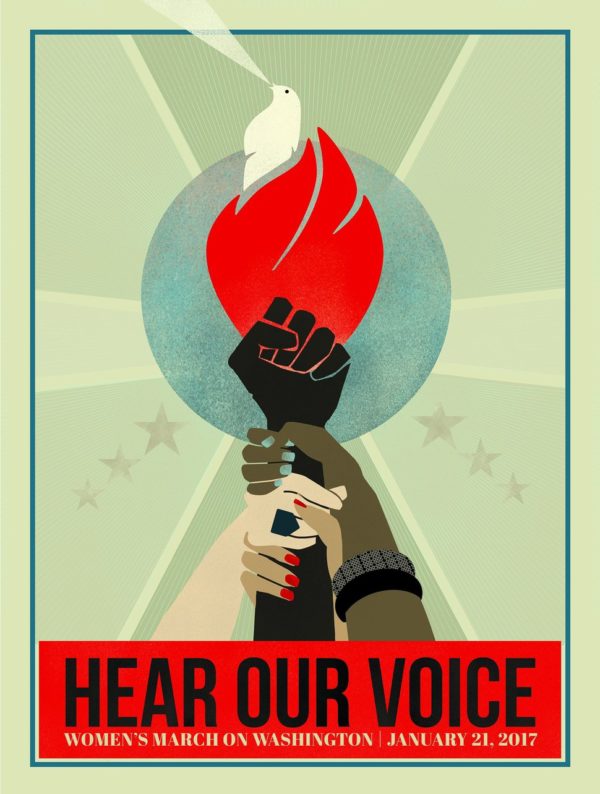
A poster for Saturday’s March in Washington